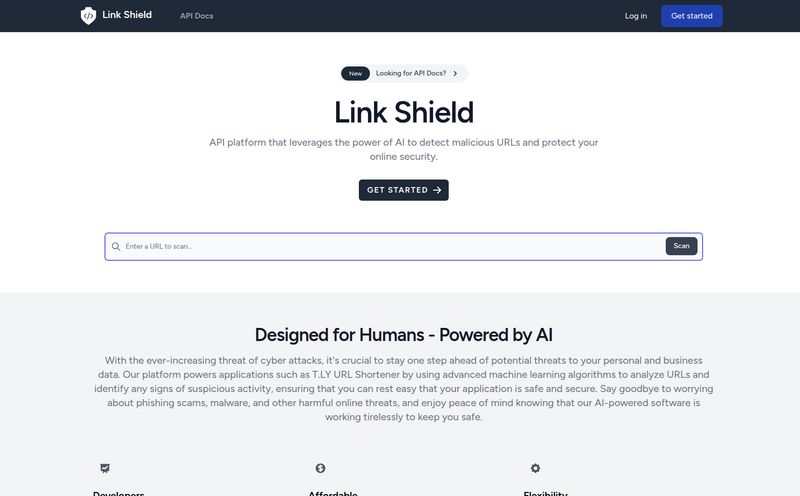If you're a developer, you've been there. The project is going great, the backend is humming along, the UI is looking sharp... and then you hit the wall. The dreaded rich text editor. For years, the choice has been a painful one. Do you wrestle a clunky, opinionated WYSIWYG editor into your beautiful, modern stack? Or do you tell your boss you need six months to build one from scratch? It's a classic build-vs-buy dilemma that has caused more than a few developers to stare blankly at their screens, contemplating a new career in pottery.
But what if there was a third option? What if you could get all the building blocks—the really, really hard parts—handed to you in a neat little package, letting you focus on creating the perfect user experience? Well, I’ve been playing around with something that feels exactly like that. It's called Tiptap, and honestly, it’s been a breath of fresh air.
What Exactly is Tiptap? (And Why Should You Care?)
Tiptap isn't just another text editor. The key word here is framework. Think of it less like a pre-built house and more like a high-end, custom modular home kit. It gives you the foundation, the walls, the plumbing for real-time collaboration, and even fancy AI-powered appliances, but it lets you decide on the layout, the paint color, and the final look.
It's headless, which is a term we hear a lot, but in this context, it's golden. It means Tiptap manages all the complex editor logic (the state, the schema, the commands) without forcing a specific UI on you. You bring your own CSS, your own icons, your own component library. You build the editor that fits your app, not the other way around. This is a massive win for anyone who obsesses over design systems and pixel-perfect interfaces. It's built by and for the open-source community, and the new Tiptap 3.0 is a testament to that collaborative spirit.
The Features That Make Tiptap Stand Out
Okay, so it's flexible. But what can it actually do? This is where it gets exciting. Tiptap isn't just an empty box; it's packed with some seriously powerful features that are usually the domain of huge companies like Google or the team behind Notion.
Truly Headless and Flexible
I mentioned this before, but it's worth repeating. The headless architecture is the star of the show. You are in complete control of the rendering. This makes it a dream to integrate with modern JavaScript frameworks like React, Vue, and Svelte. No more fighting with someone else's CSS or bizarre HTML output. The markup it generates is clean and predictable.
Real-Time Collaboration That Actually Works
This is the holy grail for so many applications. Building a collaborative experience like in Google Docs is notoriously difficult. Tiptap, paired with its open-source backend solution Hocuspocus, makes it almost... easy? You get cursor presence, text synchronization, and all the magic that makes users feel like they're in the same room. For any SaaS tool, internal wiki, or content platform, this feature alone is a reason to consider it. It just works.
The AI Assistant and Content Magic
In 2024, if you're not thinking about AI integration, you're behind. Tiptap is right there with a Content AI feature. This isn't just a gimmick. It allows you to build actions directly into your editor to transform text, fix grammar, change the tone, or summarize a long document. Imagine giving your users their own little writing assistant, baked right into the interface they're already using. It feels like the future, and Tiptap serves it up on a platter.

Visit Tiptap
All The Bells and Whistles: Comments, Conversions, and Components
Beyond the big-ticket items, Tiptap has thought about the little things that make a big difference. It has built-in support for a commenting system, which is another one of those features that sounds simple but is a pain to implement well. Need to get content in or out? It handles DOCX import and export. And to make life even easier, especially for React devs, they offer a library of pre-built UI components and templates. This dramatically speeds up the process of getting a beautiful, Notion-like editor off the ground. You can literally launch in weeks, not years.
Let's Talk About Tiptap's Pricing
Alright, the money talk. How much is all this goodness going to set you back? Tiptap's pricing model is actually one of my favorite things about it. It feels fair and scales logically. Here’s a quick breakdown.
| Plan | Price | Key Feature |
|---|---|---|
| Open Source | Free | The core editor, open-source extensions, and the Hocuspocus backend. Incredibly generous for any project. |
| Start | $49/month | Includes cloud features and up to 500 documents. Great for new projects getting started. |
| Team | $149/month | Up to 5,000 documents and more collaboration features. Ideal for small to medium-sized teams. |
| Growth | $999/month | For scaling applications, with up to 50,000 documents and enhanced support. |
| Enterprise | Custom | For high-volume needs, on-premises hosting options, and dedicated support. |
The beauty here is the free open-source tier. You can build a ridiculously powerful, self-hosted editor without paying a dime. The paid plans are mostly for their managed cloud services, pre-built UI components, and premium extensions like Content AI, which is a perfectly reasonable model.
My Honest Take: The Good and The Not-So-Good
What I love is the sheer flexibility. As someone who has spent weeks trying to bend other editors to my will, the headless approach feels liberating. The open-source foundation gives me confidence, and the ability to self-host the collaboration backend is a huge plus for projects with strict data privacy requirements. The feature set is just... smart. They've clearly focused on the things that are hardest for development teams to build themselves.
Now, it's not all sunshine and rainbows. The biggest thing to be aware of is that Tiptap requires development knowledge. This is not a WordPress plugin you install with one click. You or your team will need to be comfortable with JavaScript and whatever framework you’re using. The initial setup, while well-documented, can feel a bit complex if you're new to the ecosystem. Also, while the core is free, many of the most polished, time-saving features like the full-fledged Comments UI and Content AI are part of the paid subscriptions. This is completely fair, but you need to factor it into your budget.
Who Is Tiptap Really For?
So, who should drop everything and try Tiptap? In my opinion, it's perfect for:
SaaS founders and developers building products that have content creation at their core. Think project management tools, knowledge bases, CRMs, or any app where users need to write and collaborate.
Companies building complex internal tools, like a custom wiki or documentation platform, who need full control over the experience and security.
Any developer who is tired of the limitations of traditional WYSIWYG editors and wants to build something truly bespoke and modern.
It’s probably not for the casual blogger looking for a simple editor for their personal site. It's a professional tool for builders, and it excels at that.
Frequently Asked Questions About Tiptap
Is Tiptap completely free to use?
Yes, the core Tiptap editor framework, its open-source extensions, and the Hocuspocus collaboration backend are all free and open-source. You can build and self-host a very powerful editor at no cost. Paid plans are for managed cloud services, premium extensions, and pre-built UI components.
Can I use Tiptap with frameworks other than React?
Absolutely. Tiptap itself is framework-agnostic. It has official wrappers for React, Vue, and Svelte, and because it's just JavaScript at its core, you can integrate it into almost any frontend setup.
How difficult is it to get started with Tiptap?
It depends on your experience. If you're a seasoned JavaScript developer, you'll find the documentation excellent and can get a basic editor running quickly. If you're newer to development, there might be a learning curve, especially when it comes to customization and setting up the build process.
Does Tiptap provide the backend for real-time collaboration?
Tiptap provides Hocuspocus, which is a backend service you can self-host. It handles the synchronization. The paid Tiptap Cloud plans offer a fully managed, maintenance-free version of this backend service.
Is Tiptap a good replacement for TinyMCE or CKEditor?
It's a different philosophy. TinyMCE and CKEditor are often used as complete, drop-in solutions. Tiptap is a framework for building your own editor. If you need deep customization and a modern, headless architecture, Tiptap is an excellent choice. If you just need to drop a pre-built editor into a form, one of the more traditional options might be simpler.
Final Thoughts
After spending some quality time with Tiptap, I'm genuinely impressed. It elegantly solves one of the most persistent and annoying problems in web development. It provides the power and flexibility to build truly first-class content creation experiences without forcing you to reinvent the wheel. It strikes an incredible balance between the freedom of building from scratch and the convenience of a pre-built solution.
If you're about to start a project that needs a rich text editor, or if you're looking to rip out an old, frustrating one, do yourself a favor and give Tiptap a serious look. It might just be the secret weapon you've been searching for.



